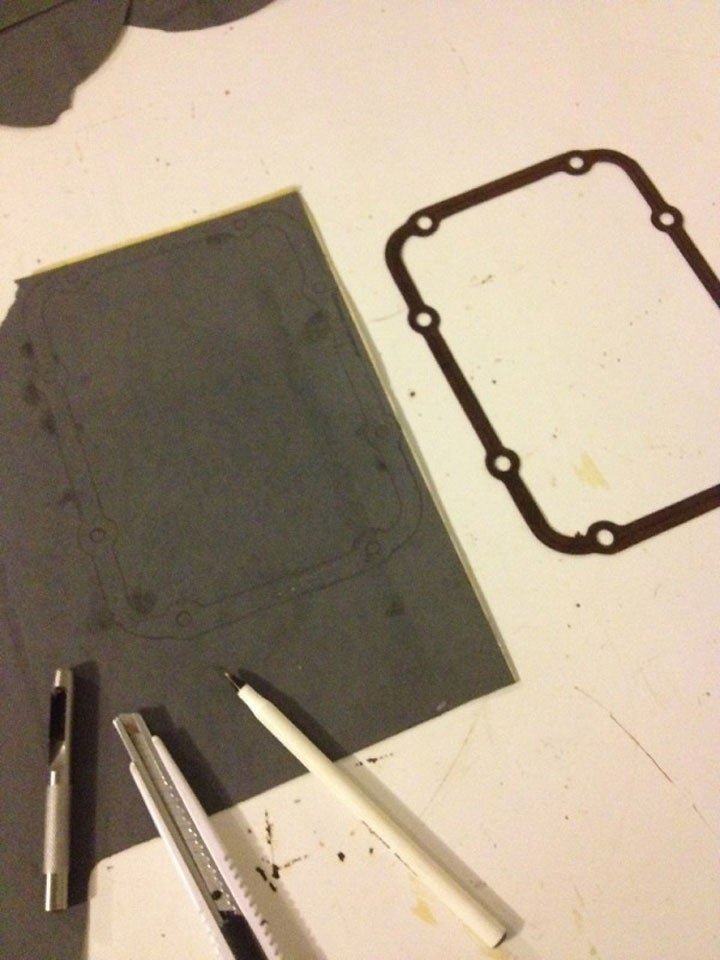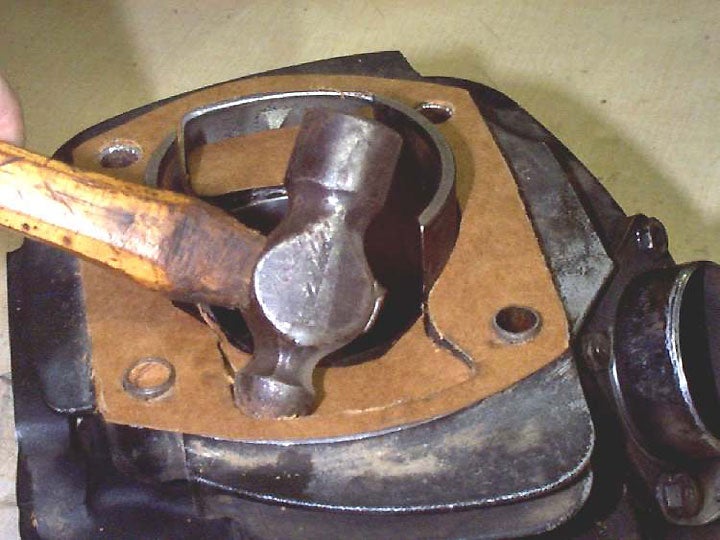A gasket is a simple little device.

All it is is a shaped piece of material that seals the junction between two surfaces in an engine or other device to prevent fluid leakage and also metal to metal contact that could cause the metal parts to gall.
Most gaskets are made from various grades of paper, and generally all of them are oil proof. Breaking or tearing a gasket on Saturday night and using the back cover of the local telephone directory to make a new one might result in a whole lot more problems than you can imagine.
Using an old Maico as an example, you’ll note that the clutch release mechanism moves only one millimeter. The back page of the telephone book directory is about twice the thickness of the stock gasket. This will cut the throw of the Maico release mechanism in half. If you have clutch release problems now, thicker material may make the situation grim indeed.
So, the best bet would be to match the gasket thickness to the original equipment thickness. If, for example, a center case gasket is needed, one that is too thick can cause the transmission shaft to float further than the factory tolerances, and the flywheels could be pulled to one side, possibly resulting in excessive side loads to the piston and, or connecting rod.
Of course, if the gasket is too thin, it is possible that the cases will not go together properly, and if they do, tolerances may be too small and the oil supply will be shut off, resulting in a seizure.
Like we said, a gasket is a simple little device, providing it is understood that it serves more than its obvious function of sealing. With that understanding in mind, let’s go through the conception and birth of a gasket made with materials at hand. To the unnerving, it is possible to make a new gasket in record time.
If at all possible, measure the mid-thickness of the original gasket with a micrometer or vernier caliper. Transfer this dimension from the instrument to your brain and go searching for paper of the same thickness. First place to check would be an old Playboy magazine. The cover is good quality and is about .005 inch thick, whereas a dirtbike magazine cover is about .004. The covers of those telephone directories are .010 thick.

Once a thickness has been determined and the proper rear cover selected, lay the gasket surface of the case on top of the paper. Draw the outline of the case with a pencil. Before removing the case, place any appropriate screws to the screw holes and lightly tap with a hammer to leave an impression in the paper. Remove the case and cut the screw holes in the paper. You can use saddlers leather punches, available from a good hardware store for about a dollar each. They come in all convenient sizes.
Place the paper on a soft surface such as a 2 x 4, center the punch inside of the gasket to match inside the case and tap smartly. Clean any excess with a razor blade. Put something on the gasket–we prefer Gasgacinch.
So, just to review:
1. Trace the outline of the parts onto the paper.
2. Tap the screws through lightly so they leave a mark on the paper.
3. Punch the screw holes clean using a leather punch or the like.
4. Trim away the excess inside paper after all else is done.
And that’s all there is to it. A new gasket has been created.
 Your Privacy Choices
Your Privacy Choices